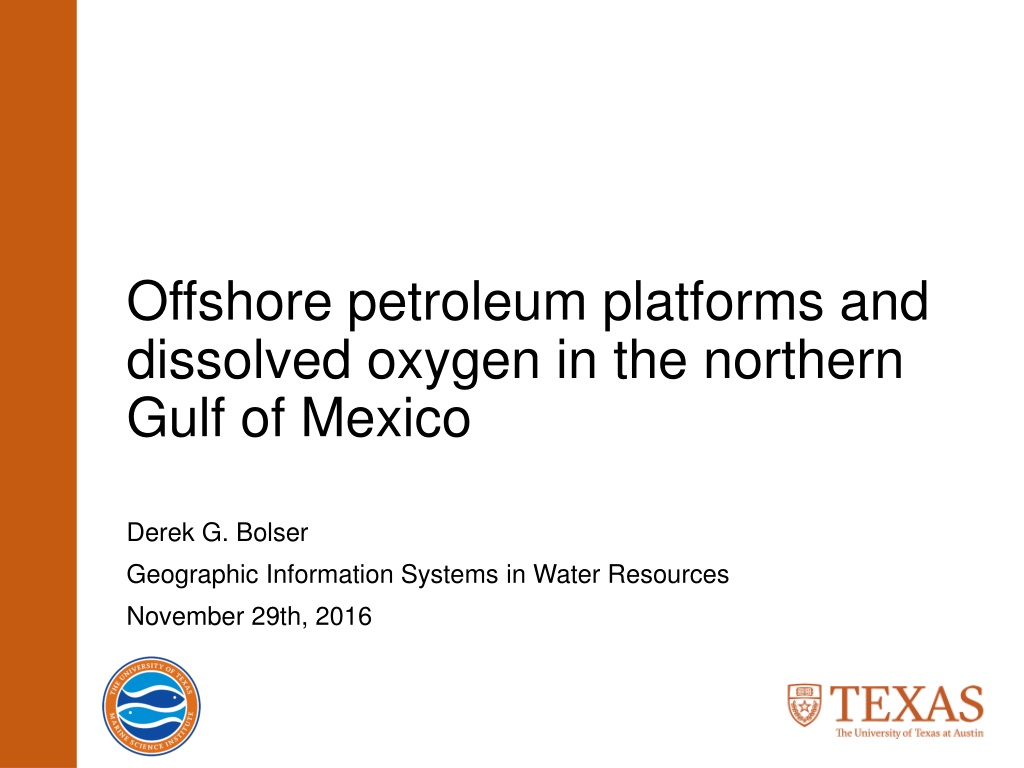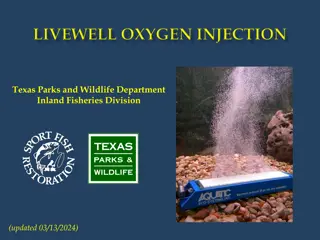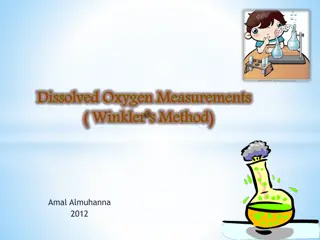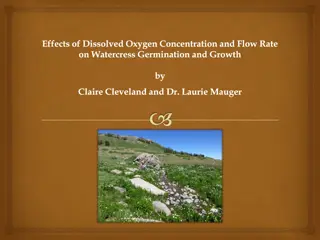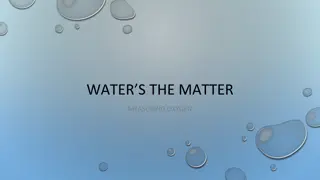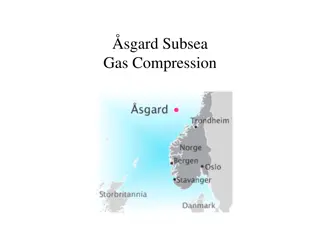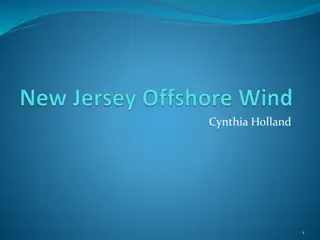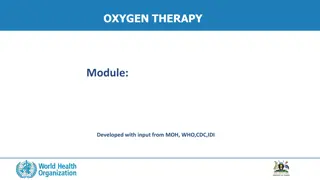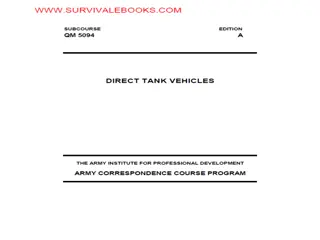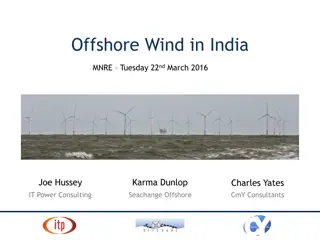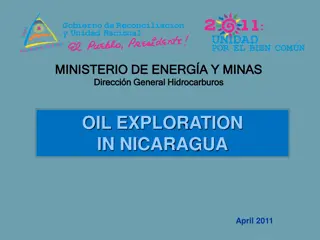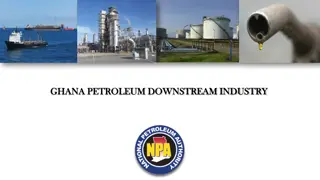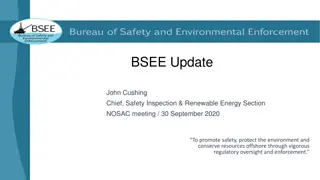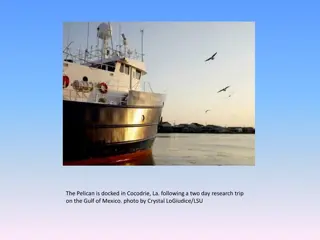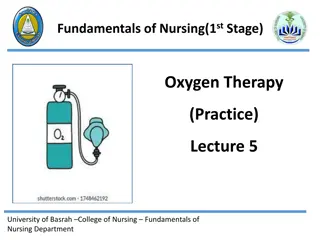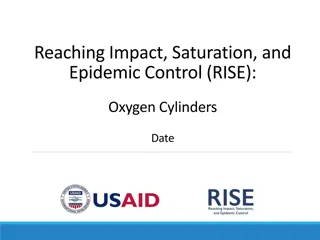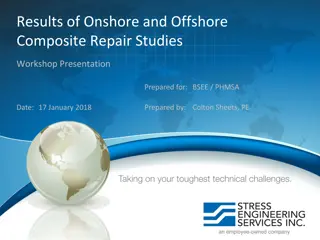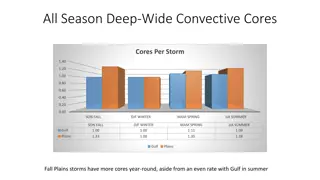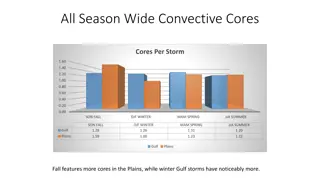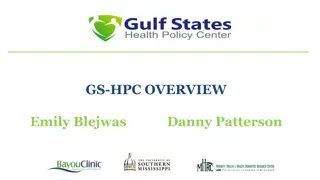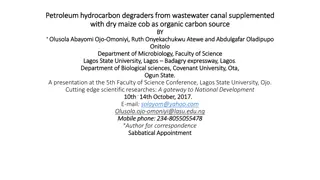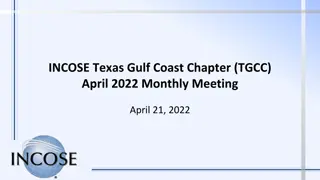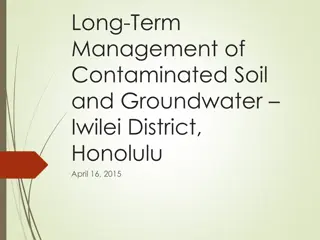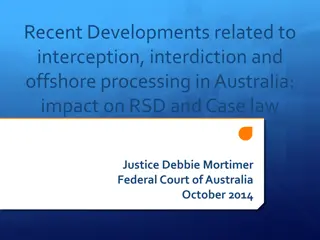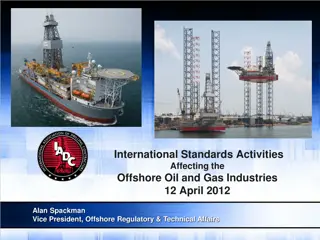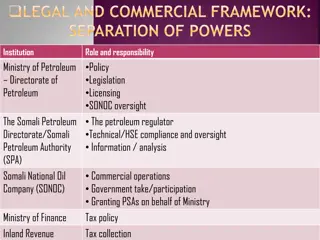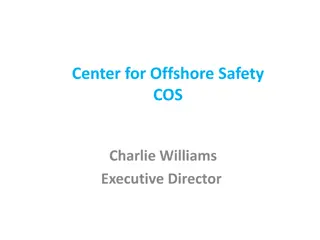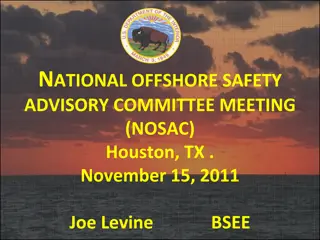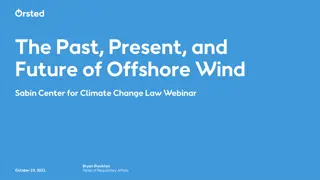Study on Offshore Petroleum Platforms and Dissolved Oxygen in the Northern Gulf of Mexico
This study explores the relationship between offshore petroleum platforms and dissolved oxygen levels in the northern Gulf of Mexico. It aims to quantify platforms within hypoxic zones and assess the total hypoxic area using data from various sources. The findings provide insights on marine habitat conditions and the impact of these structures on the marine ecosystem.
Download Presentation

Please find below an Image/Link to download the presentation.
The content on the website is provided AS IS for your information and personal use only. It may not be sold, licensed, or shared on other websites without obtaining consent from the author. Download presentation by click this link. If you encounter any issues during the download, it is possible that the publisher has removed the file from their server.
E N D
Presentation Transcript
Offshore petroleum platforms and dissolved oxygen in the northern Gulf of Mexico Derek G. Bolser Geographic Information Systems in Water Resources November 29th, 2016
Overview - Background - Objectives - Data - Methods - Results Rig Fusion - Significance
Background Transient hypoxic zones are known to exist in the northern Gulf of Mexico These phenomena are well studied, and are caused by excess nutrient input Most marine organisms cannot survive in hypoxic zones Population Education
Background FL dept. of ag. Offshore petroleum platforms are important habitat for many marine organisms 68% of age 2 red snapper in the Gulf reside on these platforms (Gallaway et al. 2009) Offshore petroleum platforms are temporary structures by legal definition
Objectives Proof-of-concept study to quantify how many platforms fall within hypoxic zones. If a sufficient number are found, a similar map with real-time data may be used to inform explosive severance decisions Quantify total hypoxic area within range of data. Erich Schlegel
Data Hypoxia data from USGS and NOAA Measurements have been taken with CTD devices every June & July since 2001 Platform location data from the BSEE There are 7225 platforms in the Gulf USGS
Methods Somewhat similar to the flood inundation mapping we did in exercise 5 Spatial join tool was very useful thanks, Dr. Maidment! Data had to be transformed back and forth between points and rasters several times. Exercise 5- Onion Creek 2013 northern Gulf
2013 results- platforms Class Hypoxic (0-2 mg/L O2) Near-hypoxic (2-5 mg/L O2) Not hypoxic (5+ mg/L O2) Number of platforms 460 612 311
2013 results- dissolved oxygen Class Hypoxic (0-2 mg/L O2) Near-hypoxic (2-5 mg/L O2) Not hypoxic (5+ mg/L O2) Area (km^2) 7,082.2924 11,883.069 2,424.9211
2015 results- platforms Class Hypoxic (0-2 mg/L O2) Near-hypoxic (2-5 mg/L O2) Not hypoxic (5+ mg/L O2) Number of platforms 93 1,309 139
2015 results- dissolved oxygen Class Hypoxic (0-2 mg/L O2) Near-hypoxic (2-5 mg/L O2) Not hypoxic (5+ mg/L O2) Area (km^2) 1,351.2498 19,782.8712 2,442.7895
Significance There may be a sufficient number of platforms in hypoxic areas to meet demolition demands in some locations This process undertaken with real-time data could be used to better plan explosive severance, or at least accurately quantify impacts Oil price
Acknowledgements Thank you Dr. Maidment and Paul Ruess! InHabitat
Questions? Home run charters Reference: Gallaway, B. J., S. T. Szedlmayer, and W. J. Gazey. 2009. "A life history review for red snapper in the Gulf of Mexico with an evaluation of the importance of offshore petroleum platforms and other artificial reefs." Reviews in Fisheries Science 17.1: 48-67.
